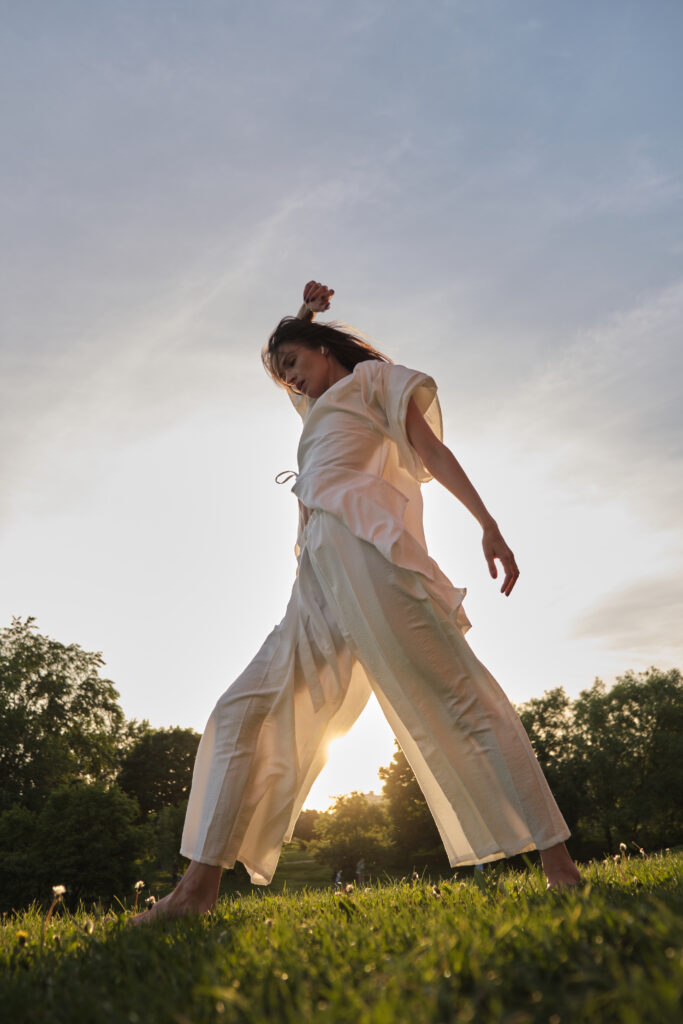Somatic dance is a transformative practice that brings together the power of movement and the wisdom of the body to facilitate healing, self-expression, and deep connection. At The School of Spiritual Healing Arts (SOSHA), we believe that becoming a Somatic Dance Facilitator is about more than just learning movement techniques—it’s about embodying the flow of energy, intuition, and the innate intelligence that resides within all of us. If you’re ready to step into this deeply creative and healing role, here’s your step-by-step guide to becoming a skilled Somatic Dance Facilitator with SOSHA.
1. Understanding Somatic Dance: The Foundation of Your Journey
Before you dive into facilitating, it’s essential to understand the philosophy and purpose behind somatic dance. Somatic dance is about moving from a place of inner awareness, tuning into your body’s sensations, emotions, and energies, and allowing those to guide the movement. It’s not about choreographed steps or performance; it’s about authentic expression and healing through movement.
At SOSHA, we emphasize the importance of understanding the mind-body connection and how trauma, emotions, and stress can be stored in the body. As a facilitator, your role is to guide participants through movement practices that allow them to release these stored energies and reconnect with their inner wisdom.
2. Start with SOSHA’s Level 1 Somatic Dance Training: Foundations
Your journey begins with Level 1, where you’ll immerse yourself in the foundations of somatic movement. This level focuses on understanding the body’s natural rhythms, exploring intuitive movement, and developing your own somatic awareness. You’ll learn how to create a safe and supportive environment for your participants, as well as the basic techniques for guiding them through somatic dance experiences.
This is also where you’ll start to connect with your personal practice. At SOSHA, we believe that facilitators must first embody the work themselves before guiding others. This means regularly engaging in your own somatic dance practice to deepen your connection to your body and the movement process.
3. Develop a Personal Practice and Reflective Journaling
As you progress through your training, it’s important to cultivate a regular personal practice. Set aside time each day or week to engage in somatic dance on your own. Pay attention to the sensations, emotions, and thoughts that arise during your practice. Journaling after each session can help you track your insights and growth, allowing you to see how somatic movement is affecting your own emotional and spiritual journey.
This self-reflection is crucial for developing the intuition and sensitivity you’ll need as a facilitator. The more you explore your own body’s movement, the better equipped you’ll be to guide others in their somatic exploration.
4. Advance to Level 2: Deepening Your Facilitation Skills
Once you’ve established a strong foundation, it’s time to move to Level 2. In this phase, you’ll dive deeper into the art of facilitation. You’ll learn advanced techniques for guiding individuals and groups through somatic dance practices, including how to work with specific themes such as trauma release, emotional expression, and spiritual awakening.
At SOSHA, we teach our facilitators how to hold space with integrity, empathy, and presence. You’ll explore how to read group dynamics, create a safe container for vulnerability, and guide participants through their own healing journeys with compassion and confidence.
5. Integration of Other Healing Modalities
One of the unique aspects of somatic dance is its ability to integrate with other healing modalities. At SOSHA, we encourage our students to explore how somatic dance can be combined with practices like breathwork, sound healing, or energy work to create a holistic healing experience. In your Level 2 training, you’ll learn how to weave these modalities into your dance facilitation, allowing you to offer a more comprehensive and transformative experience for your participants.
6. Master the Practice with Level 3: Mastery of Somatic Dance Facilitation
For those called to mastery, Level 3 is where you truly step into your role as a skilled and confident Somatic Dance Facilitator. In this phase, you’ll learn how to lead large group ceremonies, integrate esoteric practices, and mentor other facilitators. This level focuses on the art of creating transformative, large-scale experiences while maintaining the integrity and intimacy of somatic dance.
You’ll also explore the deeper spiritual dimensions of somatic movement, learning how to guide participants into altered states of consciousness through dance. By the end of this training, you’ll be equipped to facilitate not only for individuals but also for communities and larger groups seeking healing through movement.
7. Cultivate Ethical Practice and Professional Boundaries
As a facilitator, it’s essential to cultivate ethical practices and maintain professional boundaries. At SOSHA, we provide comprehensive training on the ethical considerations of working with participants, including how to create a trauma-informed space, maintain confidentiality, and ensure that all participants feel safe and supported throughout their journey.
We also guide our facilitators in the importance of self-care. Holding space for others can be emotionally and energetically taxing, so it’s crucial to have your own support systems in place, including regular personal practice, self-reflection, and mentorship.
8. Stay Connected with the SOSHA Community
Your journey as a Somatic Dance Facilitator doesn’t end with your certification. At SOSHA, we’re committed to supporting our graduates with ongoing learning opportunities, mentorship, and a global community of like-minded practitioners. By staying connected with the SOSHA community, you’ll continue to grow and evolve as a facilitator, while also sharing your experiences and insights with others on the same path.
9. Share Your Gift with the World
Once you’ve completed your training, it’s time to step into your role as a Somatic Dance Facilitator. Whether you choose to lead intimate workshops, one-on-one sessions, or large group ceremonies, remember that your work is deeply transformative. You’re not just leading a dance—you’re guiding people back to themselves, helping them release what no longer serves, and supporting them in their healing journey.
At The School of Spiritual Healing Arts, we believe that somatic movement is one of the most profound ways to facilitate healing, both for the body and the spirit. If you’re ready to step into your power as a facilitator, join us on this transformative path and become a part of the growing movement of somatic healing.
Want to check out the SOSHA Somatic Dance Certification Programs? CLICK HERE

